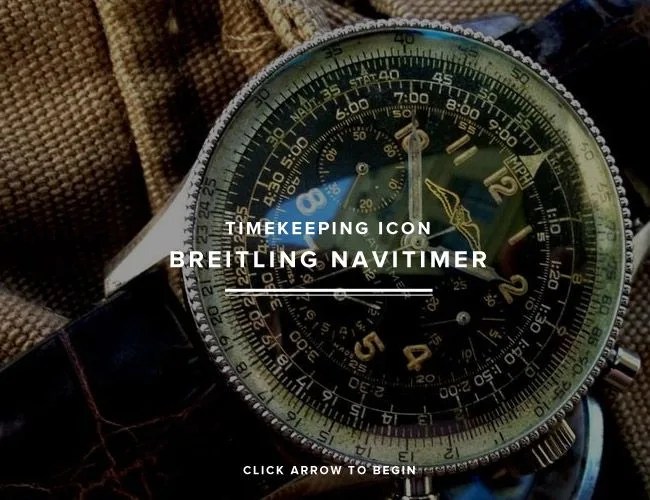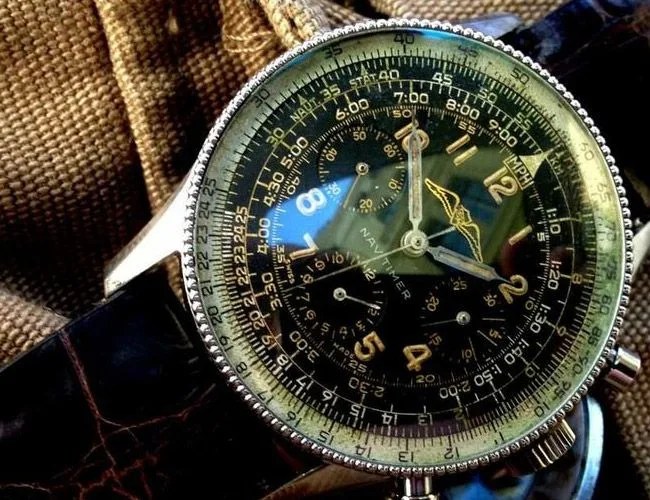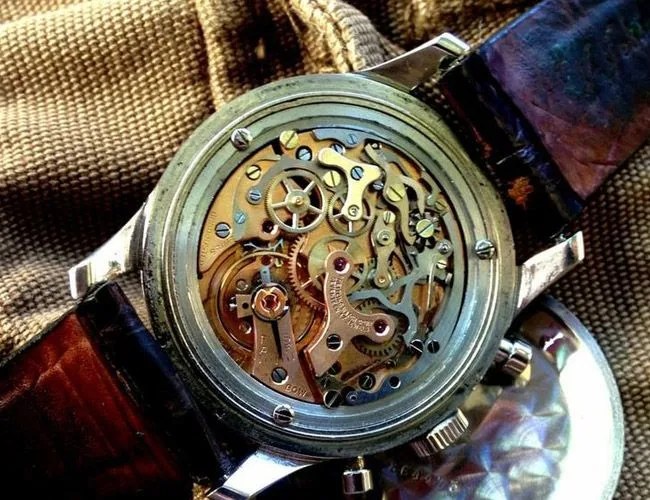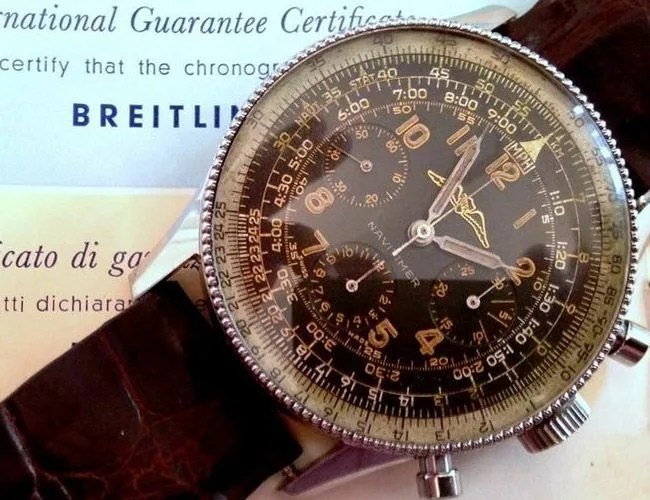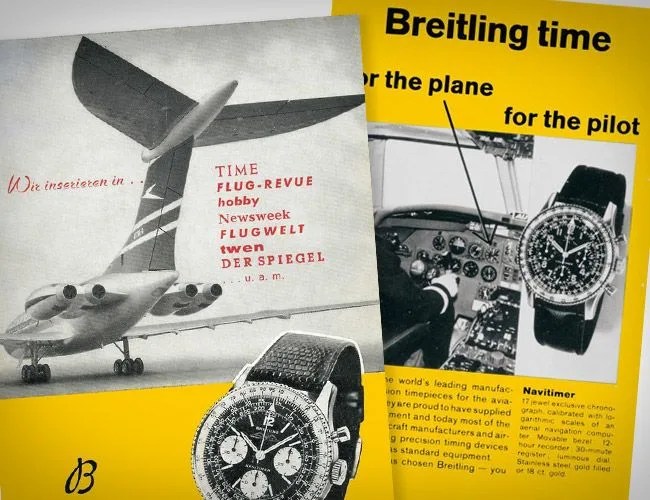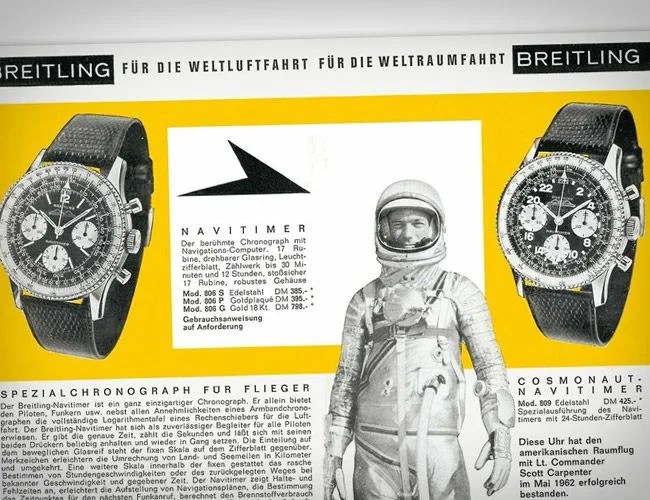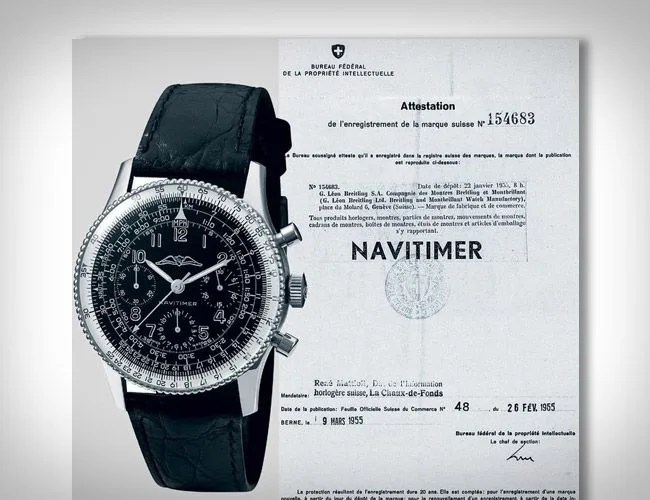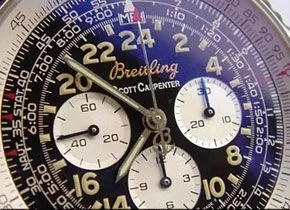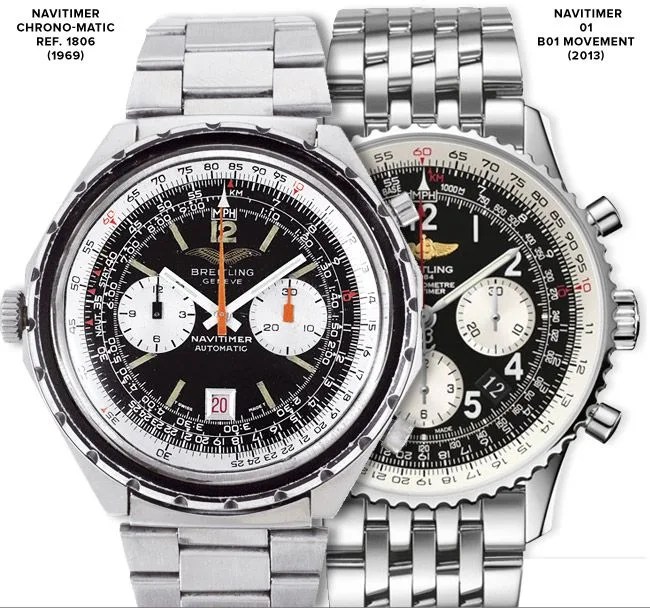My cousin’s husband used to be a test pilot in the U.S. Air Force. In fact, at one point he ran the test pilot office at Edwards Air Force Base, and retired a full bird colonel. He’s the real deal. Why am I telling you this? Because when he was asked about the prominent Breitling on his wrist, he replied, “I need a Navitimer so I can do my calculations!” (emphasis his).
That brief anecdote may tell you something about how the Breitling Navitimer is viewed by the guys who fly jets for a living. That bit about calculations would be in reference to the Navitimer’s most recognizable feature, the “navigation computer” — a circular slide rule located on the rotating bezel that a pilot can use to handle all the calculations they need to make when planning a flight (airspeed, rate/time of climb/descent, flight time, distance, and fuel consumption functions, plus kilometer-nautical mile and gallon-liter fuel conversion functions). This slide rule bezel has been present on every Navitimer Breitling has ever produced and is at the heart of this tool watch’s incredible popularity.
MORE TIMEKEEPING ICONS: Audemars Piguet Royal Oak | Rolex Cosmograph Daytona | Jaeger-LeCoultre Reverso
The Navitimer (the name is an assemblage of navigation and timer) was not the first slide rule watch. That honor belongs to Breitling’s Chronomat, released in 1942. The Chronomat was a worthy forerunner to the Navitimer, and the uninitiated can perhaps be forgiven for believing it’s an early version. To be sure, the circular slide rules of the Chronomat and the Navitimer helped make Breitling recognizable to the public as the pilot watch company.
Sensing a need for a self-contained wrist instrument for pilots, Breitling and the Aircraft Owners & Pilots Association (the AOPA) jointly developed the Navitimer chronograph in the early 1950s. It debuted to the public in 1954. (Much of the literature out there says 1952, but there is healthy debate — and a more than reasonable doubt — about that.) The AOPA immediately adopted the watch as its official timepiece, and this combination of endorsement and the watch’s innate functionality quickly made the Navitimer a favorite of pilots around the world.
7 photos
The generations of the Navitimer produced through the 1950s and 1960s were given the Reference 806 designation, and the movement in the earliest versions was the Valjoux 72. This famous motor powered the watch for a year and a half before giving way to the Venus 178 in late 1955. Some late 1960s watches had Valjoux 7736 movements, possibly due to intermittent shortages of the Venus. These were marked 806-36 or 806E. In 1968 the so-called “Big Case” Navitimers — Ref. 816 and 1806 — appeared, some returning to the Valjoux 72 powerplant. All of these early movements were hand-wound calibres, being of the era before the advent of the self-winding chronograph.

